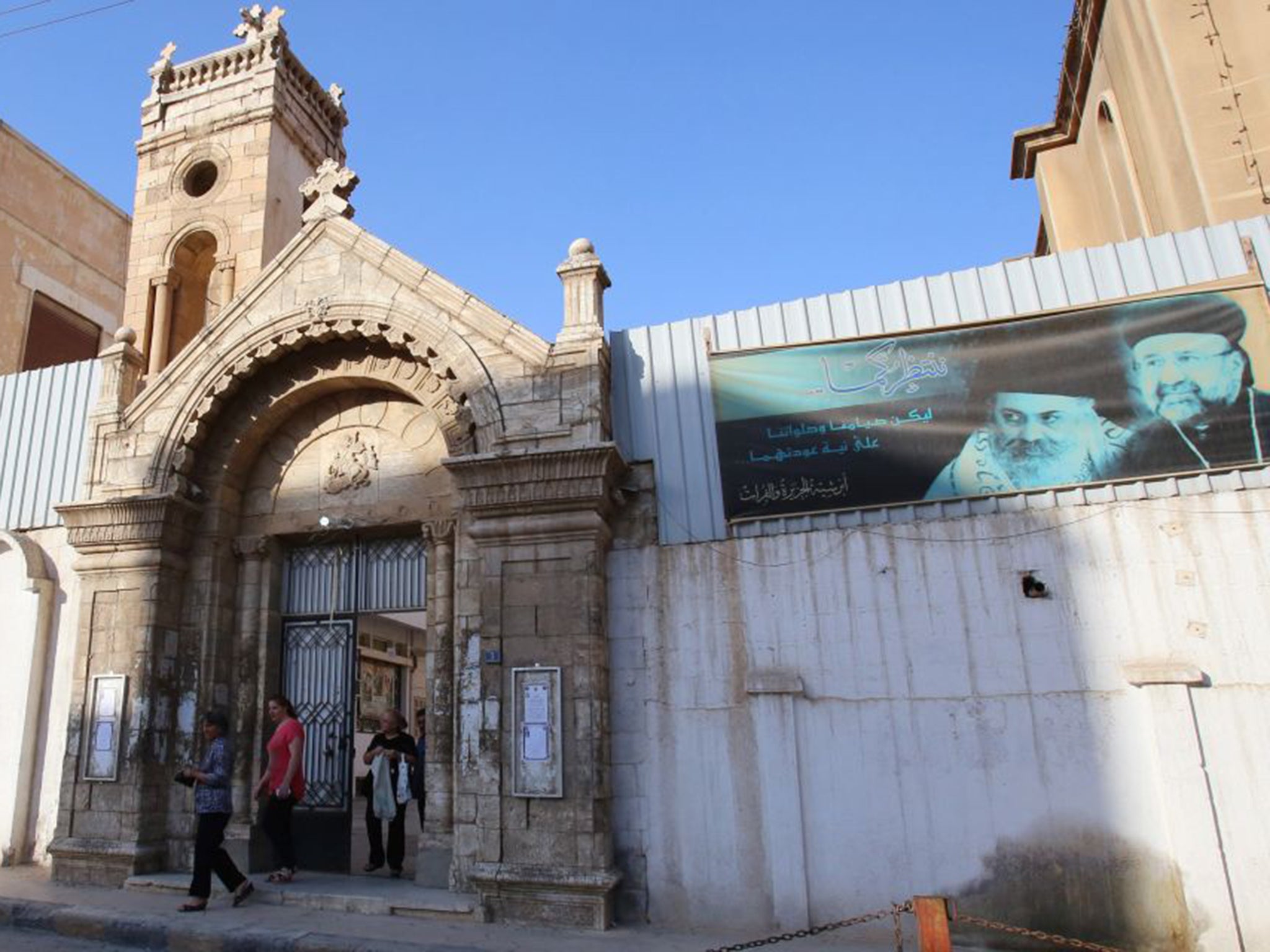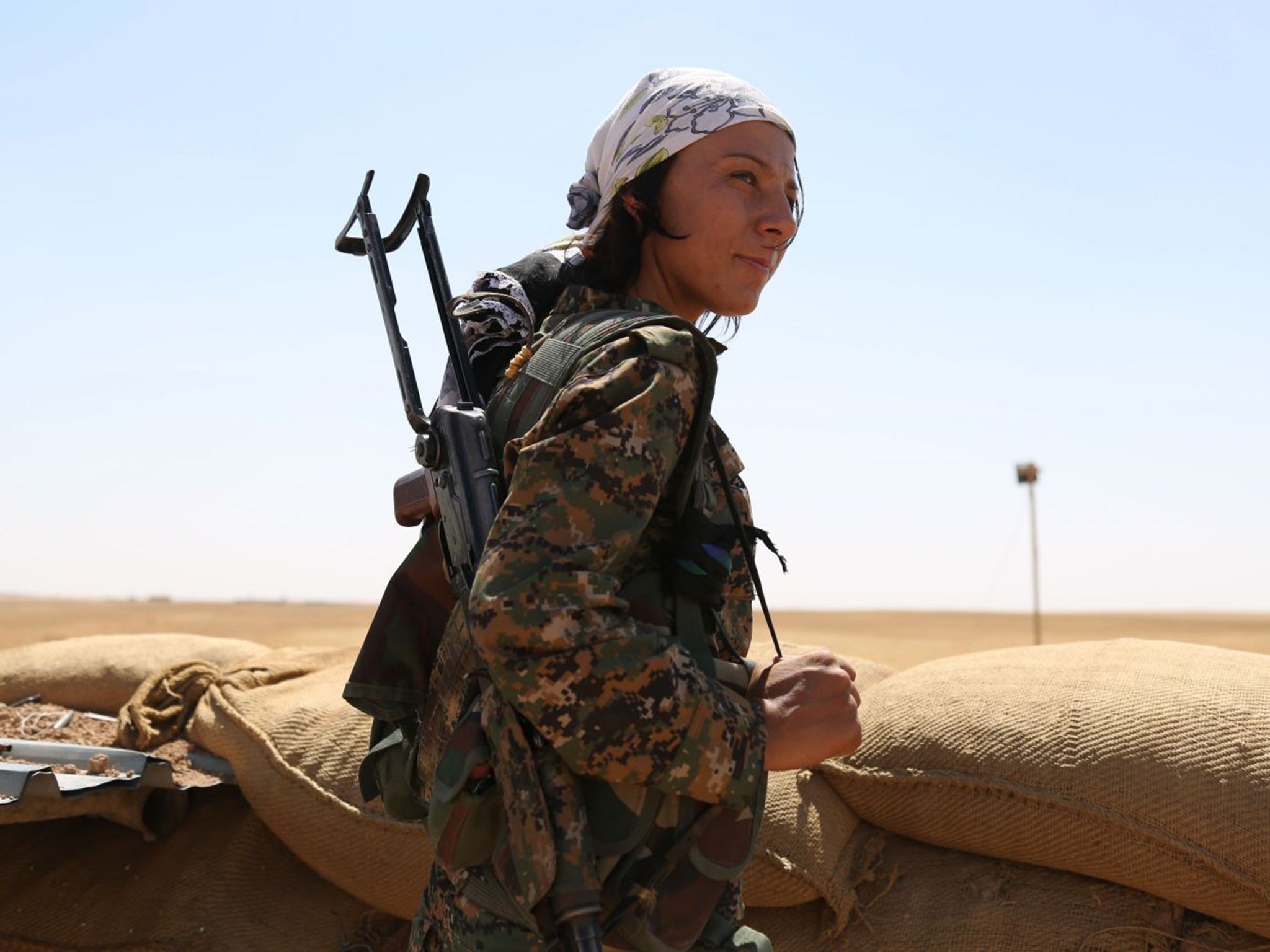War with Isis: Why Syria’s Christians can never go home
Even when Isis retreats, its strategy is to ensure a state of terror and insecurity is left in its wake

Syrian Christians are too terrified of past kidnappings and present suicide bombings by Isis to return to their homes in towns and villages from which the Islamist militants have been driven. Much the same is true of other communities in Syria, meaning that few of the 4 million Syrian refugees now outside the country and the 7 million within it are ever likely to go home.
Isis has adopted a strategy of ensuring that even where it is defeated and forced to retreat, it can ensure that there is a state of terror and permanent insecurity in the territory from which it has withdrawn. One can see the results of this process clearly in the town of Tal Tamir and nearby villages on the Khabur river in north-east Syria, where there were once large Assyrian Christian populations and which were seized by Isis at the start of the year. These places were recaptured by the Syrian Kurdish People’s Protection Units (YPG) in the early summer but they remain desolate and uninhabited.
It has been months since there was any fighting in Tal Tamir, and it is undamaged compared to many Syrian cities, but it has become a ghost town with empty streets, boarded up houses and overgrown bushes in gardens. We had been directed in Qamishli, the largest city in this Kurdish-controlled part of Syria, to seek out the local Christian militia and, with some difficulty, we found their headquarters in an abandoned villa.
“I was told you were coming, but not to tell you anything,” said the local Christian commander. But there probably was not much to tell, since there were only a few militiamen, mostly without weapons, in the villa which had no furniture aside from a rusty metal table and some chairs. He pointed us vaguely in the direction of another militia headquarters that turned out to be closed. The Kurdish YPG likes to give the impression that it has non-Kurdish allies, but in practice does not tolerate independent militias.
In searching for elusive Christian militiamen, we met Jan Abraham, an Assyrian Christian and the mayor of a small village called Tal Maghas, where he says that “out of 50 families which fled my village in February when Isis advanced only three of them have returned. In Tal Tamir itself, there used to be between 15,000 and 20,000 people, but today this is down to about 1,000.” He says that the Christians have mostly sought sanctuary in Lebanon, Turkey, Germany and Sweden.

Mr Abraham, a cheery confident man aged 54, still has a job in the Agricultural Bank in Tal Tamir, though most of his customers have left. He says that he advises people to come back, but “they are too afraid of Daesh [Isis].” And they have reason to fear since their villages have been largely destroyed and between 200 and 220 Assyrian Christians, part of a community that sought refuge in Syria after being massacred in Iraq in 1933, were abducted by Isis in February and have still not been released, aside from a few old people. “We don’t know where they are,” says Mr Abraham. Last week Isis released a video showing three Assyrian captives being executed.
Out of 50 families which fled my village in February when Isis advanced only three of them have returned
Syrians often begin conversations by saying their neighbourhood is safe and only gradually confess that this security has its limitations. Mr Abraham was no exception and, after 10 minutes, he revealed that a woman suicide bomber from Isis had been detected the previous week in Tal Tamir trying to enter a market, though she had been detained before she could blow herself up. She had been wearing traditional long Arab robes and pretending to be pregnant to conceal the explosives around her waist. Local people were suspicious of her because they thought she did not walk like a pregnant woman, but the non-Kurdish militiamen were all male and could not search her. This did not apply to the YPG fighters, many of whom are women, who searched the suspect and prevented her detonating her bomb.
Isis is pursuing the same tactics across Kurdish-controlled north Syria where the Islamist militants have suffered their most serious military defeats this year at the hands of YPG ground forces backed by intense United States bombing. The YPG broke Isis’s long siege of Kobani in January, though 70 per cent of the city was pulverised by US bombs and missiles, and the Kurdish fighters have since advanced to the Euphrates. Isis lost an important border crossing with Turkey at Tal Abyad in June and failed in an attempt to seize Hasaka city. Yet the front line between Isis and the YPG is long and porous, so it is impossible to defend against infiltrators. Pervasive fear that Isis has “sleeper cells” in every Sunni Arab community stokes paranoid suspicions and deepens hostility between Arab and Kurd.
North-east Syria is probably the safest part of the country, apart from the cities of the Mediterranean coast, but among the remaining Christians there is a feeling that the region has become too dangerous to live in. Mr Abraham says that he is advising people to return, but he admits that he himself “is waiting for a job contract in Germany or Sweden”. His son is an electrician in Germany and his wife and daughters are in Lebanon, though conditions are so bad there that they might return to Syria at least temporarily.
Many Christians in Tal Tamir have been displaced several times. Isho Jamo, a 48-year-old unemployed electrician, originally comes from a village called al-Kharita outside Hasaka city, which in 2012 was entered by insurgents “who claimed to be the Free Syrian Army but turned out to be Ansar al-Sharia [an Islamist rebel faction] who stole everything in our homes.” Mr Jamo fled to Hasaka and then to Tal Tamir and would like to go back to his village “but it has been destroyed”.
We asked if this was the end of the Assyrian Christian community, and Mr Jamo said he believed not, but did not look very convinced by his own words. He was speaking outside a fine looking Christian church called al-Khadissa that was opened by the church warden called Jan Jacoub, who owns a small shop opposite the church. Mr Jacoub lamented that “the congregation of our church was between 700 and 800 on Sunday, and people would overflow into the street, but today only 100 people come to services”.
Back in Qamishli, the main city of the region, Daoud Daoud, an Assyrian leader, confirmed that most of his community would never return to Syria. Most Christians in Syria are deemed to be supporters of President Bashar al-Assad, but Mr Daoud said that the leader of his group, Gabriel Gawriya, had been arrested by the government in 2013 and was in a prison outside Damascus.
The Kurds say the corner of Syria they control is secular and all sectarian and ethnic groups can live there, but even so the insecurity is so great that normal life has become impossible. Even where there has been little destruction, the fear and sense of threat is so high that few refugees or displaced people can go home.
Join our commenting forum
Join thought-provoking conversations, follow other Independent readers and see their replies
Comments
Bookmark popover
Removed from bookmarks